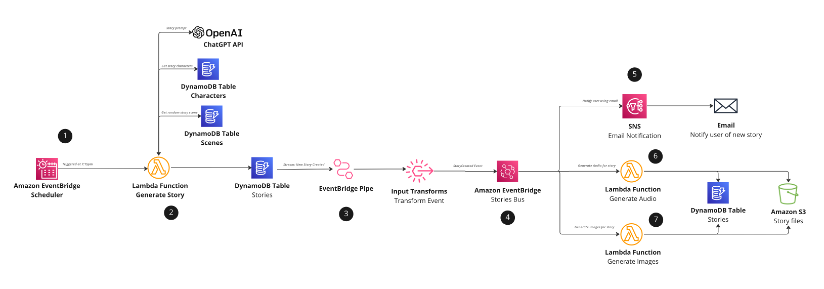AWS Compute Blog
Category: Database
Using the circuit-breaker pattern with AWS Lambda extensions and Amazon DynamoDB
The circuit breaker pattern is a powerful tool for helping to ensure the resiliency and stability of serverless applications. Lambda extensions are a good fit for its implementation, as demonstrated in this example.
Sending and receiving webhooks on AWS: Innovate with event notifications
Webhooks are a popular method for applications to communicate, and for businesses to collaborate and integrate with customers and partners. This post shows how you can build applications to send and receive webhooks on AWS.
Building a serverless document chat with AWS Lambda and Amazon Bedrock
This post is written by Pascal Vogel, Solutions Architect, and Martin Sakowski, Senior Solutions Architect. Large language models (LLMs) are proving to be highly effective at solving general-purpose tasks such as text generation, analysis and summarization, translation, and much more. Because they are trained on large datasets, they can use a broad generalist knowledge base. […]
Implementing the transactional outbox pattern with Amazon EventBridge Pipes
Reliable interservice communication is an important consideration in microservice design, especially when faced with dual writes. Combining the transactional outbox pattern with dual writes provides a robust way of improving message reliability.
Deploying an automated Amazon CloudWatch dashboard for AWS Outposts using AWS CDK
This post is written by Enrico Liguori, Networking Solutions Architect, Hybrid Cloud and Sumeeth Siriyur, Sr. Hybrid Cloud Solutions Architect. AWS Outposts is a fully managed service that brings the same AWS infrastructure, services, APIs, and tools to virtually any data center, colocation space, manufacturing floor, or on-premises facility where it might be needed. With Outposts, […]
Serverless ICYMI Q1 2023
February 12, 2024: Amazon Kinesis Data Firehose has been renamed to Amazon Data Firehose. Read the AWS What’s New post to learn more. Welcome to the 21st edition of the AWS Serverless ICYMI (in case you missed it) quarterly recap. Every quarter, we share all the most recent product launches, feature enhancements, blog posts, webinars, […]
Implementing an event-driven serverless story generation application with ChatGPT and DALL-E
This post demonstrates how to integrate AWS serverless services with artificial intelligence (AI) technologies, ChatGPT, and DALL-E. This full stack event-driven application showcases a method of generating unique bedtime stories for children by using predetermined characters and scenes as a prompt for ChatGPT. Every night at bedtime, the serverless scheduler triggers the application, initiating an […]
Managing sessions of anonymous users in WebSocket API-based applications
In this post, you learn how to keep track of user sessions when using WebSockets API and not lose the session context when the user reconnects again. Apply learnings from this example to improve your user experience when using WebSocket APIs for web-frontend and mobile applications, where internet connections may be unstable.
Introducing AWS Lambda Powertools for .NET
CloudWatch and AWS X-Ray offer functionality that provides comprehensive observability for your applications. Lambda Powertools .NET is now generally available. The library helps implement observability when running Lambda functions based on .NET 6 while reducing the amount of custom code.
Implementing reactive progress tracking for AWS Step Functions
This blog post is written by Alexey Paramonov, Solutions Architect, ISV and Maximilian Schellhorn, Solutions Architect ISV This blog post demonstrates a solution based on AWS Step Functions and Amazon API Gateway WebSockets to track execution progress of a long running workflow. The solution updates the frontend regularly and users are able to track the […]









